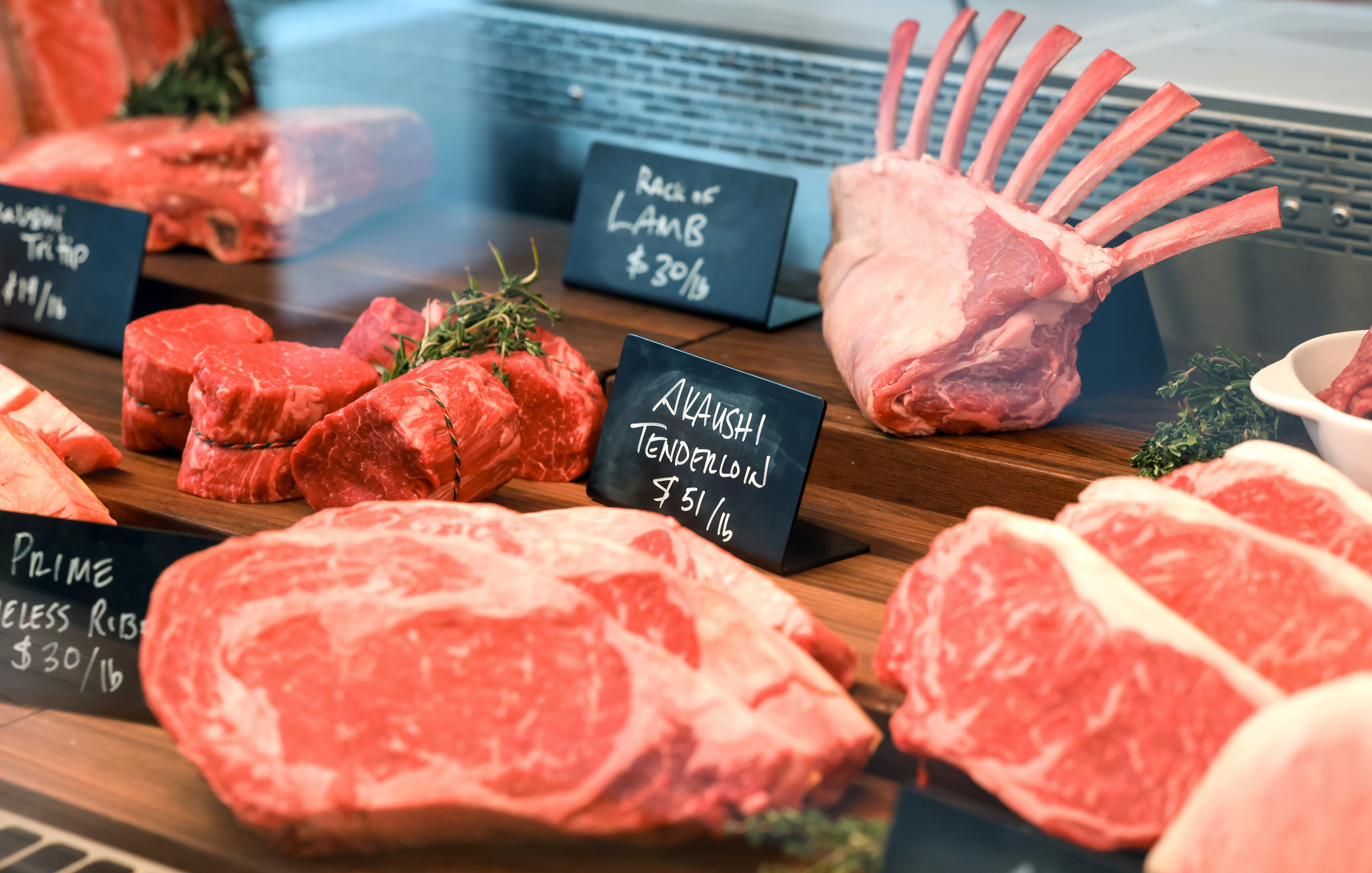Leading Reasons to Shop at Bagley Farms Meat Market Edwardsville IL for Costs Meats
Leading Reasons to Shop at Bagley Farms Meat Market Edwardsville IL for Costs Meats
Blog Article
Discover the Art of the Butcher's Cut in a Modern Meat Market
In the ever-evolving landscape of modern meat markets, the butcher's cut has transcended its typical roots, combining age-old workmanship with modern practices. Today's butchers are not merely processors of meat; they are experienced craftsmens that emphasize sustainability and honest sourcing. Their knowledge in choose and preparing cuts customized to certain cooking requirements provides an unparalleled dining experience. What truly establishes the contemporary butcher apart is their capability to create a deeper connection between customers and the origins of their meat. How do these masters balance practice with technology, and what implications does this have for the future of meat consumption?
Development of Butchery Methods
The advancement of butchery methods shows an abundant tapestry of innovation and adaptation driven by advancements in innovation, changes in customer need, and a much deeper understanding of meat science. Historically, butchery was a craft passed down with generations, with approaches developed over centuries to maximize return and flavor. The commercial transformation ushered in automation, transforming traditional techniques and making it possible for large handling.
The mid-20th century saw butchery techniques further improved by scientific understandings right into muscle biology and meat aging, enhancing both inflammation and taste. Developments like vacuum cleaner packaging and refrigeration expanded item shelf-life, enabling butchers to expand offerings and improve quality control. This period also noted the surge of specialized equipment, such as band saws and meat slicers, which increased precision and efficiency in meat processing.

Computerized systems currently help in tracking animal provenance and optimizing cuts to satisfy particular client preferences. Additionally, a revival in artisanal butchery has actually arised, blending standard skills with contemporary knowledge to cater to customers seeking moral and lasting meat alternatives.
Recognizing Meat Cuts
Comprehending the ins and outs of meat cuts is vital for both butchers and customers looking for quality and value. For butchers, specific cuts mirror skill and regard for the craft, making sure very little waste and ideal yield.

Understanding muscle structure is vital; muscular tissues used extra regularly by the animal often tend to be harder and are best matched for sluggish cooking methods, while less-used muscles, like those located in the loin, are a lot more tender and suitable for barbecuing or roasting. Experience with these differences empowers consumers to make educated choices, boosting their culinary ventures.
Picking Top Quality Meat
Selecting the ideal meat includes even more than just selecting an aesthetically attractive piece from the display. bagley farms meat market edwardsville il. The art of choosing high quality meat requires a discerning eye and knowledge of particular attributes that represent freshness and excellence. Firstly, take notice of the shade; beef ought to have a brilliant, cherry-red tone, while lamb must show a soft pink tone, and pork a light pink. This indicates the meat is fresh and hasn't been subjected to oxygen for as well lengthy.
Second of all, think about the marbling, which refers to the white flecks of fat within the muscle mass. Correct marbling is an essential indicator of tenderness and taste, as it thaws during food preparation, improving the meat's juiciness. Bear in mind, higher marbling often correlates with superior top quality cuts, such as USDA Prime.
Appearance is an additional crucial factor; meat must feel strong to the touch, not slimy or overly soft. Additionally, be mindful of the fragrance. Fresh meat ought to have a tidy, neutral scent, complimentary from any kind of sour or off-putting smells.
Pairing Cuts With Cooking Approaches

Alternatively, tougher cuts like brisket and chuck roast are abundant in collagen, which breaks down right into jelly when prepared slowly. These cuts are optimal for braising or slow-moving roasting, enabling the meat to tenderize in time and create deep, intricate flavors. Cuts such as brief ribs and pork shoulder get on well with slow-cooking methods, where extended cooking times transform their robust appearances right into delicious recipes.
Lamb shanks and oxtail, which call for prolonged food preparation to tenderize, are best candidates for cooking or slow simmering. These techniques coax out abundant, passionate flavors while keeping wetness. By understanding the special qualities of each cut, chefs and home cooks alike can boost their culinary pop over to this site creations, guaranteeing each dish is both pleasing and remarkable.
The Butcher's Function Today
Browsing the progressing landscape of the modern meat market, the butcher's role today extends beyond plain preparation of cuts. Contemporary butchers are cooking artisans, teachers, and advocates for lasting practices. They bridge the gap between the ranch and the fork by guaranteeing honest sourcing, understanding animal husbandry, and prioritizing transparency in the supply chain. This shift shows the growing customer demand for top quality over amount, where provenance and animal well-being are extremely important.
Along with crafting specific cuts, butchers now involve directly with clients, using click cooking recommendations and tailoring choices to match individual demands and preferences. Their experience in meat aging, marbling, and flavor profiles empowers customers to make enlightened choices, enhancing their culinary experiences. This customized solution exemplifies the butcher's progressing function as a trusted advisor in the cooking area.
Furthermore, butchers are essential in lessening waste, using entire pets to produce diverse items such as sausages and stocks. This thorough approach not only appreciates the animal however additionally aligns with modern sustainability goals. In this way, the contemporary butcher embodies both tradition and technology, adjusting to an ever-changing market while maintaining the artistry and stability of their craft.
Conclusion
Proficiency in comprehending varied meat cuts and quality indications empowers butchers to offer enlightened referrals, lining up certain cuts with optimum food preparation methods. By recognizing historic techniques while welcoming modern demands, the butcher's duty stays crucial in today's sophisticated meat market.
Report this page